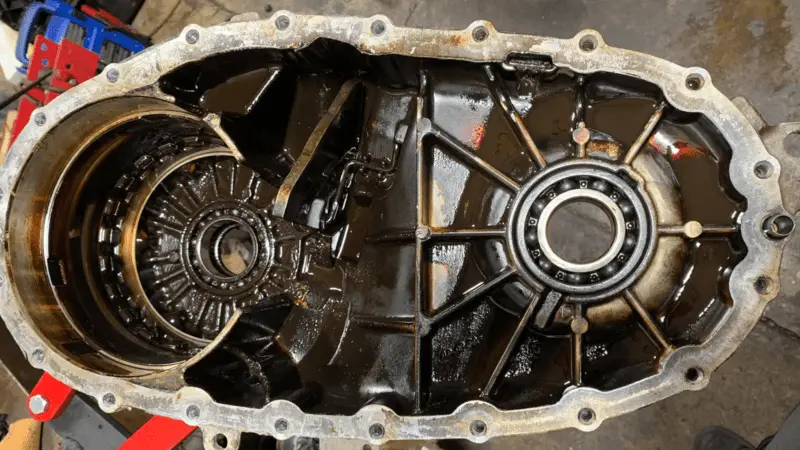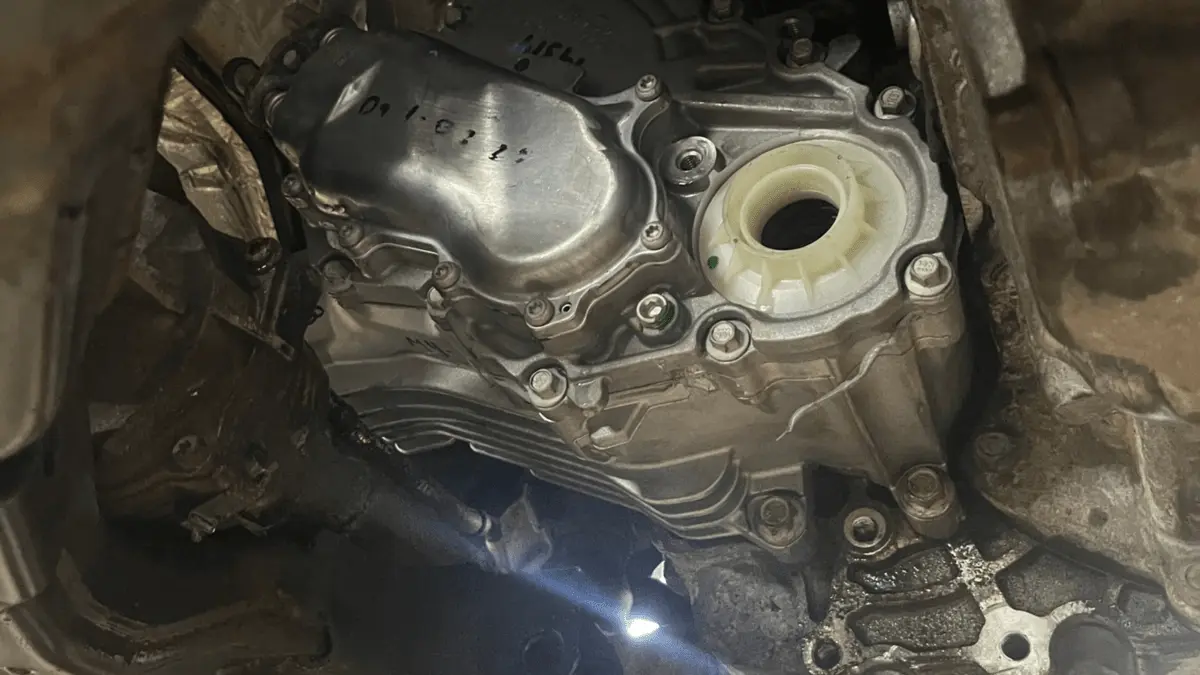Your vehicle’s transfer case is a crucial component, responsible for distributing power to the wheels and enabling smooth transitions between two-wheel drive and four-wheel drive modes. But what happens when your transfer case goes bad? How Long Can You Drive With A Bad Transfer Case?
Driving with a bad transfer case is risky. While the duration varies based on the issue’s severity, a continued operation can lead to further damage, safety risks, and costly repairs. It’s best to limit driving and seek prompt repairs to ensure your vehicle’s safety and performance.
Join us as we unravel the mysteries of this critical drivetrain component and guide you in making informed decisions when faced with transfer case troubles.
How Long Can You Drive With A Bad Transfer Case?

Driving with a bad transfer case is risky and not advisable. While your vehicle may still move, continuing to drive with a malfunctioning transfer case can lead to severe consequences. A damaged transfer case can affect the gearbox, axles, and driveshafts, potentially causing further complications and costly repairs.
The extent of how long you can drive without addressing this issue depends on the severity of the damage. In any case, delaying repairs can result in transmission failure and other significant problems while driving. Therefore, it’s essential to have a problematic transfer case rebuilt or repaired as soon as possible to ensure your safety on the road and prevent more extensive damage to your vehicle.
How Much Time Does A Transfer Case Last?

The lifespan of a transfer case largely depends on various factors, including maintenance, driving habits, and vehicle usage. On average, transfer cases can last between 150,000 and 200,000 miles, making them more durable than other automotive components. However, it’s important to note that regular maintenance plays a crucial role in extending the transfer case’s life.
To maximize its longevity, it’s recommended to replace the transfer case fluid at least every 30,000 miles or every three to five years, mainly if your vehicle is frequently used for heavy hauling or off-road adventures. With proper care, some drivers may never need to replace their transfer case during the entire lifespan of their vehicle.
Delaying repairs or neglecting maintenance can increase the risk of severe damage to other critical components of your car. Therefore, it’s essential to stay proactive in maintaining your transfer case to ensure its extended lifespan and overall vehicle health.
Is It Safe To Drive With A Broken Transfer Case?
Driving with a broken transfer case is generally not safe and not recommended. The transfer case is a critical component in four-wheel and all-wheel drive vehicles, responsible for distributing power between the front and rear wheels. When it’s broken, it can lead to a variety of issues that can compromise your vehicle’s safety and performance.
Here are some reasons why it’s not safe to drive with a broken transfer case:
- Loss of Four-Wheel Drive: With a broken transfer case, you may lose the ability to engage four-wheel drive. This can be particularly hazardous in slippery or off-road conditions where four-wheel drive is essential for traction and control.
- Drivability Issues: A malfunctioning transfer case can cause drivability problems, such as unexpected shifts between two-wheel and four-wheel drive, leading to losing control while driving.
- Damage to Other Components: Driving with a damaged transfer case can cause additional strain on the transmission, axles, and drivetrain, potentially leading to further costly repairs.
- Unpredictable Handling: Your vehicle’s handling and stability can be compromised when the transfer case is not functioning correctly, making it unsafe for regular road use.
How To Figure Out The Broken Transfer Case?
Figuring out a broken transfer case in your vehicle is crucial to ensure safety and prevent further damage to your drivetrain. Here are some steps to help diagnose a failing transfer case:
- Early Warning Signs: Watch for early warning signs of a failing transfer case. Difficulty shifting gears or problems with your four-wheel or all-wheel drive system are key indicators that something may be amiss.
- Burning Odor and Reduced Fluid Levels: If you notice a burning odor emanating from your vehicle or see reduced fluid levels in the transfer case, it’s a sign that there may be an issue. Reduced fluid levels can increase friction inside the transfer case, leading to problems.
- Difficulty Shifting Gears: If you experience problems shifting gears, whether you have a manual or automatic transmission, it’s essential to have a technician examine your transfer case. The transfer case can be a source of difficulty when shifting.
- Fluid Leaks: Do not ignore fluid leaks coming from the transfer case. If you observe any fluid leaking, it’s essential to address the problem immediately. Driving with a leaking transfer case can lead to further damage, and in this case, it’s best to have your vehicle towed to a repair shop.
- Unintended Shifts: If your vehicle unexpectedly changes into or out of four-wheel drive, it could indicate a problem with the transfer case. Such unintended shifts can compromise your vehicle’s stability and safety.
- Unusual Sounds: Pay attention to sounds coming from under your vehicle. Grinding, chattering, or clicking noises can signal a transfer case problem. These sounds can indicate internal damage or misalignment in the transfer case.
- Check Engine or Service Four-Wheel Drive Light: If your vehicle’s dashboard displays the check engine light or a service four-wheel drive light, it may be due to a faulty transfer case. Modern vehicles are equipped with diagnostic systems that can detect transfer case issues and trigger warning lights. To pinpoint the specific problem, use an OBD-II scanner to read the diagnostic trouble codes. If the scanner returns the CO306 code, it may indicate transfer case problems.
How To Fix A Bad Transfer Case?
Fixing a bad transfer case is a complex task that may require mechanical expertise and specialized tools. Here are the general steps to address transfer case issues, but remember that it’s advisable to consult a professional mechanic for a proper diagnosis and repair.
- Diagnosis: The first step is to diagnose the issue accurately. Perform a thorough inspection of the transfer case, checking for leaks, visible damage, or unusual noises. Consider using an OBD-II scanner to read diagnostic trouble codes if the check engine or service four-wheel drive light is illuminated.
- Fluid Check and Replacement: Ensure that the transfer case has the correct fluid level and that the fluid is in good condition. If the fluid is low or contaminated, replace it according to the manufacturer’s specifications. Clean fluid is essential for proper lubrication and cooling of internal components.
- Leak Repairs: If you find fluid leaks, identify their source and repair any damaged seals or gaskets. Leaks can be a common cause of transfer case problems, and addressing them can often resolve them.
- Gear Synchronization: If the transfer case is experiencing problems with gear synchronization or shifting, it may require adjustment or repair. Misaligned or damaged shift forks and components may need to be realigned or replaced.
- Chain Replacement: The chain inside the transfer case can wear out over time. If you hear grinding or unusual noises from the transfer case, it may be a sign that the chain needs replacement. This is a more involved repair that often requires disassembling the transfer case.
- Electrical Component Inspection: For electronically controlled transfer cases, check the electrical components, including sensors, switches, and the transfer case control module. Sometimes, problems can be resolved by repairing or replacing these components.
- Internal Component Inspection and Repair: If the issue persists, disassemble the transfer case to inspect the internal components. Worn-out gears, bearings, or shafts may need replacement. This is a complex task and should be performed by an experienced mechanic.
- Reassembly and Testing: After repairing or replacing components, reassemble the transfer case. Test it thoroughly to ensure it functions correctly and engages the four-wheel drive system as expected.
- Reinstallation: If the transfer case was removed for repair, reinstall it in your vehicle and ensure it’s properly aligned and connected to the drivetrain.
- Final Check: Test the transfer case by engaging in four-wheel drive mode and driving your vehicle to ensure it performs correctly. Listen for any unusual noises and monitor for leaks.
Is Transmission Damage Possible Due To A Faulty Transfer Case?
Yes, transmission damage is possible due to a faulty transfer case. The transfer case is an integral part of the drivetrain, connecting the transmission to the front and rear axles, which are responsible for driving the wheels. If the transfer case fails or malfunctions, it can have a direct impact on the transmission and other drivetrain components.
Here’s how transfer case issues can lead to transmission damage:
- Loss of Lubrication: The transfer case relies on lubricating fluid to reduce friction and heat. A malfunctioning transfer case can lead to low fluid levels or contamination and insufficient lubrication for the transmission and other components. Inadequate lubrication can cause excessive wear and damage to the transmission.
- Misalignment or Strain: A malfunctioning transfer case can cause misalignment or uneven power distribution between the front and rear wheels. This can strain the transmission, leading to premature wear and potential damage.
- Overheating: Transfer case problems may lead to overheating of the drivetrain. High temperatures can damage transmission components, mainly clutch plates, and seals, resulting in costly repairs.
- Loss of Control: Transfer case issues can result in unexpected shifts between two-wheel drive and four-wheel drive modes. These sudden changes can lead to a loss of control while driving and put additional stress on the transmission.
- Driveability Problems: If the transfer case is not functioning correctly, it may cause drivability problems, making gear shifts difficult and potentially causing damage to the transmission over time.
FAQs
1. How Long Can I Drive With A Bad Transfer Case Without Repairing It?
It’s not advisable to drive with a malfunctioning transfer case for an extended period. The length of time you can drive depends on the severity of the issue, but driving with a bad transfer case can lead to further damage, jeopardizing safety and increasing repair costs.
2. Can I Temporarily Drive With A Bad Transfer Case If I’m Careful?
While it’s possible to continue driving for a short distance to reach a repair shop, it’s risky. A lousy transfer case can cause unpredictable handling and loss of control, making it unsafe for regular driving. It’s best to limit driving and seek repairs promptly.
3. What Are The Consequences Of Driving With A Bad Transfer Case?
Driving with a bad transfer case can damage the transmission, axles, and other drivetrain components. This can lead to costly repairs and compromised vehicle performance.
4. Can I Engage A Four-Wheel Drive With A Bad Transfer Case?
Attempting to use four-wheel drive with a malfunctioning transfer case can exacerbate the problem and may lead to further damage. It’s best to avoid engaging four-wheel drive until the issue is resolved.
5. Is It More Cost-Effective To Repair Or Replace A Bad Transfer Case?
Whether to repair or replace a bad transfer case depends on the extent of the damage. In some cases, minor issues can be repaired, but extensive damage may make replacement a more practical and cost-effective option. Consulting a qualified mechanic is crucial to determine the best course of action.
Finally, How Much Does It Typically Cost To Replace A Transfer Case?
Replacing a transfer case can be a significant expense. The cost varies depending on several factors, including the make and model of your vehicle, labor costs, and whether you opt for a new or remanufactured transfer case. On average, you can expect to pay anywhere from $2,000 to $3,500 to replace a transfer case.
This cost may also include fees associated with purchasing new components or fluid. While it may seem expensive, waiting to address transfer case issues can lead to even costlier repairs, such as gearbox, axles, and driveshaft replacement. It’s essential to address transfer case problems promptly to prevent further damage and maintain the safety and performance of your vehicle.

Eric L. Friedman is a car expert who has worked on Chevy and GMC trucks for over 10 years. He started AutoYolo to help people fix their own cars. On the blog, he shares easy tips, step-by-step guides, and repair advice to make car problems less stressful and more affordable.

